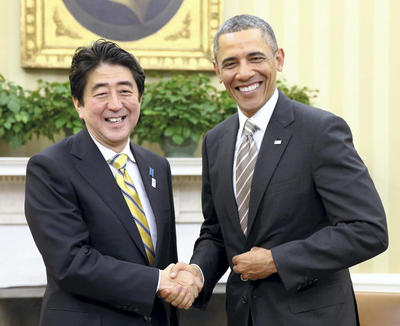Second, in his State of the Union address the president gave the go-ahead for negotiating a comprehensive FTA with the EU by the end of 2014.
The administration is misguided in bowing to the EU’s plea for a two-year timetable for FTA negotiations. Such a course will fail and may well imperil a successful conclusion of the strategically and economically vital TPP negotiations.
The TPP negotiations have emerged as the central symbol of the US diplomatic and economic ‘pivot’ to Asia. Over the past three years President Obama and former secretary of state Hillary Clinton underlined the strategic importance of Asia. National security adviser Michael Froman has also explicitly tied the TPP to US economic and security goals.
If the TPP is successful, it will establish rules to curtail or eliminate domestic barriers to trade in such areas as services, competition with state-owned enterprises, health and safety, and government procurement. For the most part, these issues represent new territory for trade agreements, and arriving at solutions will be a complicated process.
So the next nine months will be crunch time for the TPP. The 11 participating nations have set the second half of 2013 as a goal for conclusion. Much of the technical work has been completed, but there are complex and politically difficult decisions that remain. The US has yet to determine on which interests it can compromise — for instance, can it lower barriers on sugar, cotton and dairy products?
For the US, the TPP endgame will command full White House attention and a mobilisation of political resources to deal with competing private interest groups, congressional committees and members of Congress. Fashioning a balanced agreement that can be defended domestically by all 11 TPP nations is an enormous task. The distraction of a second set of negotiations with the EU will undercut the Obama administration’s ability to bring the TPP to a successful conclusion over the next year.
Near-term success for the US–EU FTA seems doubtful for a number of reasons. First, given the dire economic prognosis for Europe, the next several years will be a difficult time to advance trade liberalisation in the EU. The prospects for internal economic salvation in Europe are dismal, and so many European leaders see the US–EU FTA as key to externally led economic growth. This is illusory because the modest growth projections linked to the FTA are for 15 years down the road, not the immediate future.
The US and the EU have been at odds for decades on many of the issues key to successful negotiations. Given that tariff rates between the two economies are quite low, the real payoffs must come from so-called nontariff barriers, such as differing regulations and standards in areas like services regulation, genetically modified organisms (GMOs), and agricultural subsidy and protection. Since the Clinton administration, special White House-appointed business coalitions have attempted (without notable success) to achieve some convergence or even mutual recognition on these issues. Here, two illustrative examples of the difficulties ahead will suffice.
First, service sectors have been cited as a priority for bilateral regulatory liberalisation. Both economies have started down this road in the WTO and in FTAs, but deeper integration will be difficult for the EU. In 2006, the European Commission mandated future internal regulatory liberalisation among all 27 EU member nations but this goal has not been met and obstacles remain. For instance, Germany retains anticompetitive services regulations. And the protectionist shoe is not all on one foot: will the Obama administration, for instance, take on the maritime unions and open coastal shipping to foreign companies and workers?
Second, there is the deep divide between Americans and Europeans on risk acceptance. Europeans are risk averse, while Americans tend to be more daring. The EU has pushed to have the precautionary principle accepted as the standard for public international law, and has mandated that risk assessment take into account outside factors such as social mores. But the US demands that regulations be limited to a science-based approach. The differences are starkly illustrated in specific policies, such as that toward GMOs. Popular sentiment will not move quickly (if at all), and European and US regulators will not change their stances on these issues in the timeframe posited for the negotiations. The end result will be watered-down regulatory provisions, continued stalemate or leaving some areas out of the agreement.
Resolution of differences between US and EU economic and societal values will not come quickly. One enthusiastic US commentator proclaimed several weeks ago: ‘Forget Asia — Time to Pivot to Europe’. The more cautionary note here would be that for the next several years, ‘Forget Europe — Time to Wrap Up the TPP’.
Claude Barfield is a resident scholar at the American Enterprise Institute.
A version of this article first appeared here in The American, the online magazine of the American Enterprise Institute.

